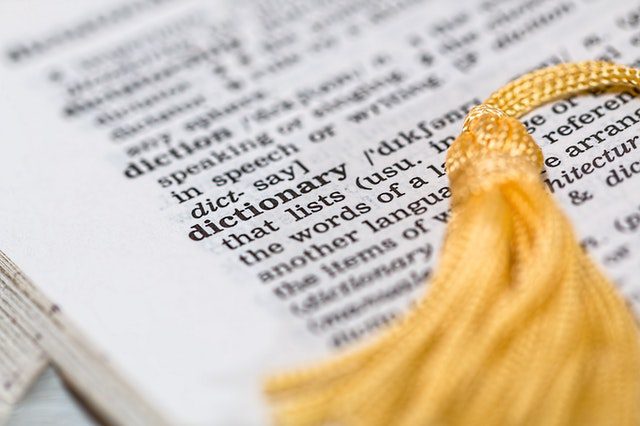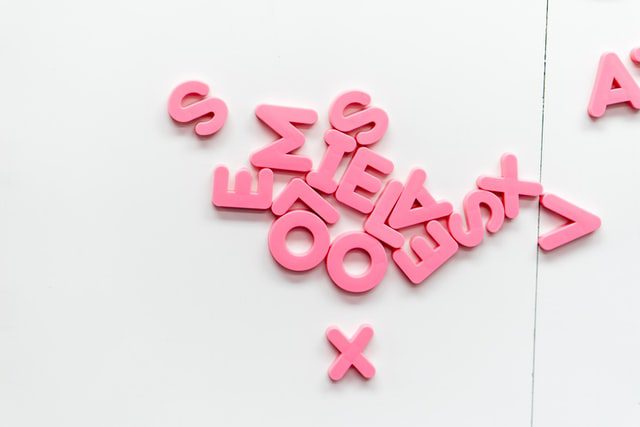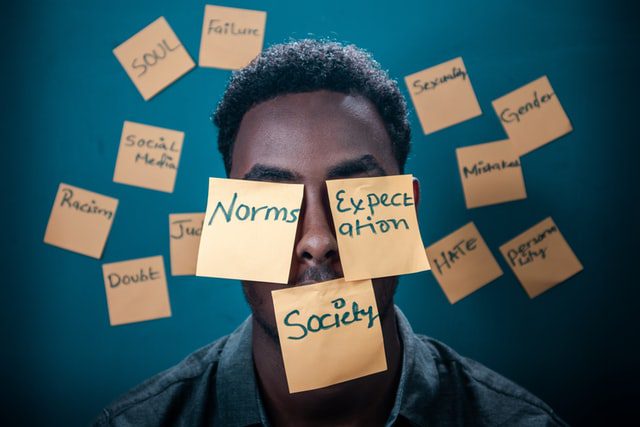
What is the T Slur, and Other Problematic Terminology
When used maliciously, anything can become a slur, even a word like “man,” which is usually not a slur. It is always better to use the descriptive term preferred by the individual person you are speaking to or about. However, there are some words in practice today that really are slurs, no matter who uses them or how. The list presented here is not exhaustive and will likely keep expanding as time goes on.
Also, note that the list is alphabetical and is not in order of importance or prevalence. There might be some profanity in the terminology as well.
Biogirl/Bioguy
This slug can have several different spellings and permutations but basically boils down to a name that someone uses to refer to a non-trans woman or man. It is generally not acceptable because it suggests that trans people have no biological basis to identify the way they do. It is much preferred to refer to “sex assigned at birth”.
Brick
This is a bad name to call someone who does not “pass”. It is often, but not always, associated with ugliness. People who “pass” are transgender people who are not recognized as transgender and are often perceived as their preferred gender.
Chaser
This term is not exclusive to trans people and can take the form of statements like “tranny chaser” or, in other contexts, “chubby chaser”. The term ‘chaser’ refers to what someone is attracted to. A tranny chaser is attracted to transgender people. This term is derogatory.
Dermablend Girl
This refers to someone who is not good at doing their makeup or someone who is trying to cover up facial hair with heavy foundations. It is most often related to trans women but can also be related to gender-fluid people.
Detransition
This term refers to someone who is changing their gender expression for a second time. It is not an appropriate term because it negates the fact that gender identity presents on a spectrum and is not binary. It also does not account for gender fluidity and attempts to oversimplify the complexity of transgender identity.
Dragzilla
It is often associated with (masculine cross-dressers) drag queens or transgender women. It refers to people who do not “pass” as trans women.
Genderfuck
This refers to someone who visibly displays their gender variant or visibly rejects expected gender roles. It is usually done on purpose.
Girl/Boy/Gender Juice
This refers to gender-affirming hormones or other hormone replacement therapy associated with gender expression.
Groin Job
This is a derogatory term for bottom or genital surgery. Most transgender people will prefer to refer to these procedures as “bottom surgery.”
Gynandromorphophilia
This is a difficult term to quantify. It usually refers to men who are attracted to people with ambiguous secondary sex characteristics or someone who has both male and female secondary sex characteristics. It suggests that attraction to transgender individuals, usually transgender women is a mental disorder.
Real Girl/Boy/Man/Woman
This is an offensive way to refer to cisgender people. It suggests that transgender people are not “real”. Transgender people seek inclusion and respect, and this kind of language negates that.
Roger
This refers to a trans woman who does not “pass” as female, and this person has usually given up on trying to “pass”. Referring to someone by an obviously male name, especially in this context, can trigger gender dysphoria and be harmful to their mental state.
Shim
Most often refers to someone whose gender identity is not obvious. This is why understanding transgender terms is important. What matters is a person’s internal sense of gender identity, not the gender assigned to them at birth. The truth is that you cannot tell someone’s gender identity by their body shape.
Sniffer
Refers to someone who is attracted to trans people, most often a cisgender man attracted to a transgender woman. In transgender terms, this is not always necessarily a good kind of attraction and can lead to the exploitation of a trans person.
Titty Skittles
An obviously offensive way to refer to Estrogen pills.
Tranner/Tranny/Trannie
This is a complicated term because it is often used by one transgender person to refer to another transgender person and is then, mostly, not considered offensive. However, it becomes offensive when used by someone who is not transgender. It is also what is referred to as the “T slur”.
Transtrender/Trender
Refers to someone who identifies as transgender only because it is popular or trendy to do so. It is usually an accusation and is difficult to prove outright without an open confession.
Trap
It comes from the Admiral Ackbar quote in Star Wars “It’s a trap.” It refers to a trans person, usually someone who is attractive and “passes”.
Trutrans
This is someone who believes that they have a medical condition that makes them “true” transgender, whereas other people are not truly transgender because they do not have the medical condition.
Hermaphrodite
This is an old medical term for intersex people. It is no longer in use and carries a lot of negative connotations.

Pornographic Terminology Used to Refer to the Transgender Community
There are a number of derogatory terms in circulation that stem from pornography. Here are a few examples. Please be warned that some of these terms are very rough and visual. If you feel it might upset you, maybe skip past this section. All of these are considered highly offensive.
Chicks with Dicks
Describes trans women.
Dickgirl/Dolls with Balls
More specifically, a trans woman who has undergone top surgery but not bottom surgery.
Jocks in Frocks
This one is less specific. It refers to a masculine-looking person who is dressed in stereotypically feminine clothing.
Pig in a Wig
Usually refers to someone who is not attractive and is wearing a wig. Often used to describe a transgender woman who does not “pass”
She-Male
This term also originated in pornography and refers to a transgender woman who might have had top surgery but not bottom surgery yet. Spelling varies, but the idea is the same.
Sluts with Nuts
Also referring to a transgender woman who has not had bottom surgery.

Difference Between Transgender People, Intersex People, and Transsexual People
The difference between these three terms is fairly important to understand. We cannot use them correctly if we do not understand what separates them from each other.
As we know, a transgender person is someone whose gender identity is different from the sex they were assigned at birth. This is an umbrella term to describe all people whose gender identity is different from the sex they were assigned at birth. Trans is a Latin prefix meaning cross, beyond, or through. For example, someone who was born with female sex but they feel male and therefore undergoes a transition to be a transgender man. This is only one example of a large variety of possibilities.
Transsexual people are also transgender but have undergone sex reassignment surgery. This is a more descriptive term but is not always appropriate to use. Unless a person refers to themselves using the term, we would not advise using it to describe people. That being said, there might be instances where a person prefers to be called transsexual after surgery. It will largely depend on the individual.
People who are intersex have a medical condition that affects their genitalia and other sex characteristics. These conditions are usually X-linked and require life long medical treatments as well as other medical procedures to manage associated symptoms. Unlike transgender individuals, these people are not necessarily gender-expansive, although they can be.
Acceptable Language for Gender Identity and Sexual Orientation
We have covered acceptable terms in another article on this site and will not be going into much detail here. However, the advice that we can give in terms of terminology is to remain as gender-neutral as you can.
Gender dysphoria is a real thing that affects hundreds of thousands of people across the world. What we want to avoid doing in our language use is to trigger gender dysphoria or to offend people about their sexual orientation or their chosen gender expression.
So, for example, just because someone might look like a transgender man does not even necessarily mean that they identify as a trans man; they might be non-binary or gender fluid. It is best to stick to gender-neutral language even if something might look obvious to you.
What we also need to bear in mind is that not all transgender people will have the same preferences for terminology. There are some terms that are universally unacceptable, as you will find with most of the terms listed above, but others might not be.
A good example of this is the term “transsexual”. Some people might be perfectly fine with being referred to as a transsexual woman or transsexual man, or some other non-binary variation of this; others might find it offensive.
Another part of language that we can work on avoiding is language that is adherent to gender norms or otherwise gender binary. Anything that binds you to the idea that a person’s place in society is dependent on a person’s enduring physical, sexual characteristics.

Terminology on Legal Documents
We have also already covered gender markers in another article as the laws surrounding them. We include the topic here again because the concept of legal sex and our gender marker is still problematic.
Transgender people are still forced to “out” themselves and not live true to their authentic selves because the marker indicated on their birth certificate and other documents like a driver’s license reflects their sex assigned at birth. And as we know, this is too often gender binary. A person is either assigned male at birth or assigned female at birth based on their external genitalia.
These body characteristics then go on to haunt them for years to come. In some places it is so bad that even after a person has undergone sex reassignment surgery (formerly called a sex change operation) that they are still labeled according to what they looked like at birth.
For example, transgender men are still listed as “female” on their birth certificate or other legal documents, and even when they “pass,” have to disclose their gender identity to strangers who look at their papers for some reason, like traffic officials. This is not only dangerous but is a very personal thing to have to disclose as a routine traffic stop.
There are often also only two gender options available: “male” or “female”, and only in some cases is there a third option: “X”. This is not inclusive of gender fluidity or non-binary identities. There is very little respect or inclusion in terms of legality for a person’s gender identity unless you fit nicely into your assigned roles.
What About Gender Identity Disorder?
Gender Identity Disorder (GID) is an outdated diagnosis for transgender people. It was formerly included in the DSM-IV but has been removed from the DSM-5.
This term is not acceptable because gender identity is not a mental disorder. The only transgender umbrella term that can still be found as a diagnosable condition in the DSM is gender dysphoria, and this is included as a diagnosis so that transgender people can have access to medical interventions (such as a surgical procedure or prescribed hormones) that are necessary to facilitate their gender expression. You will also find that this is the suggested treatment course for dysphoria.
This diagnosis also gives transgender people access to insurance coverage for gender expression-related procedures, including pre-operative and post-operative care. So as much as GID has caused problems and debates about transgender identity in the past, having gender dysphoria in the DSM has proven to be helpful to transgender people.
Are Drag Queens Transgender Women?
No, the two are separate. Because a transgender woman is, in fact, a woman, she cannot be a Drag Queen. Drag Queens specifically are masculine people who dress up in feminine clothing. What we also need to understand is that this cross-dressing is also prevalent among heterosexual men who were assigned male at birth. It is not even an indication of someone being gay, although it is more prevalent among the LGBTQ+ community.
The alternative to a Drag Queen is a Drag King, which refers to feminine people who dress up in masculine clothing. They are often also heterosexual women who were assigned female at birth but can also be members of the LGBTQ+ community.
For a transgender person who is a cross-dresser, the categorization will be that a trans woman can be a Drag King and a trans man can be a Drag Queen. Although even these kinds of classifications are problematic because they are binary in nature. They do not account for those who are gender fluid or who otherwise do not adhere to binary ideas of gender identity.
Furthermore, there is a decidedly strained relationship between the Drag community and the transgender community as a whole. Many transgender people are not comfortable with the idea of Drag because it interferes with transgender issues. Some feel that it suggests that trans people are only “dressing up”, which is not the case.
For the most part, a cross-dresser who specifically dresses in the fashion of a Drag King or Drag Queen does so for the purpose of a performance on stage. Sometimes as a satire of another gender, that is usually very obviously different from your own gender as a performer. This is especially common among comedians.
In Conclusion
As responsible members of society, we need to make a concerted effort to move away from possibly offensive or inappropriate language. This is not an issue that affects only the transgender community and can be found in a variety of settings.
Understanding the difference between what is acceptable and what is not is a logical first step at improving our language use. So, if you want to make a difference, look up all the terminology, understand what it means and why it is acceptable or not, and then implement it into your daily speech.



